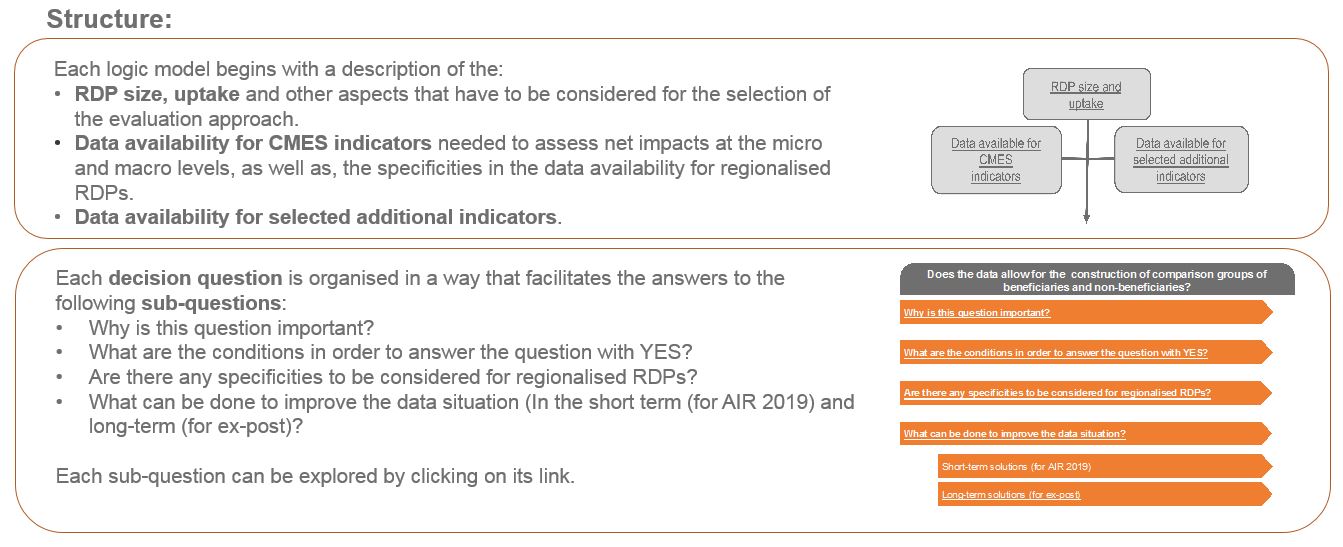The interactive decision tool consists of a set of 7 logic models covering the 13 Pillar 2 CAP Impact Indicators. The 7 logic models can be read separately and aim to:
- Assist evaluation stakeholders in their decision on which evaluation approaches they can use for the assessment of the common RDP impact indicators, as well as providing the necessary data and information sources at the EU level for these approaches.
- Provide recommendations on possible solutions for overcoming data-gaps at the national and regional levels (e.g. by providing guiding questions, practical hints and links to external information sources).
The tool focuses on data and information sources pertinent for the assessment of RDP achievements and impacts in 2019 and the ex-post. The decision tool is based on the Guidelines ‘Assessment of RDP impacts and achievements in 2019’. Additionally, the tool provides:
- Explanations on data needs for proposed evaluation approaches including availability and suitability of data for RDP evaluations (frequency, delays, time series).
- Important questions to consider.
- Links to existing data sources and good practices.
- Complementary information on evaluation methods and their data needs.





